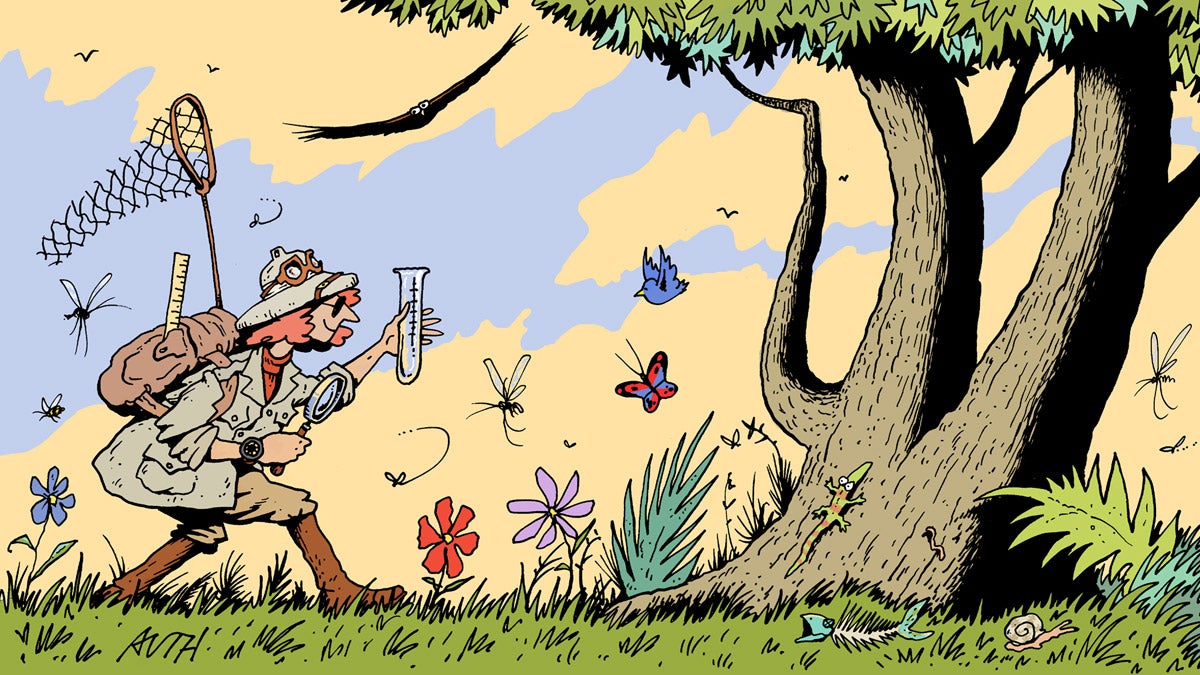How to get involved in citizen science this spring
Listen
(Illustration by Tony Auth)
If you’re interested in counting critters, measuring rain and seeking out cherry blossoms, these projects are for you.
As everyone in the Philadelphia region is keenly aware, it’s been a long hard winter. Like the postal service, citizen scientists don’t let rain or snow or sleet deter them from their mission. On The Pulse, we’ve met ice watchers, bird counters and folks on the lookout for insects invading Christmas trees.
But now, we’ve had a few teasing hints of warmer weather, so it’s time to spring ahead. And that brings to mind a whole new crop of citizen science projects just waiting for the new season.
Darlene Cavalier is the founder of the website SciStarter, sort of a one-stop shop for all things citizen science. She’s been collaborating with The Pulse on citizen science stories and shared a few of the top science projects coming our way this spring.
“Springtime is the time for citizen science,” Cavalier says. “So you can find, in our project finder, everything from collecting information about precipitation to checking out bird nests and looking for incubating eggs.”
In terms of collecting information on rain and precipitation, Darlene is referencing a project called COCORAHS, or the Community Collaborative, Rain, Hail and Snow Network.
“It’s important for people who own farms and gardens alike. You measure the precipitation – rain – using a rain gauge. The project tells you how to record the rain log information. It also helps you determine the moisture level of your soil, which is equally important, if you’re an avid gardener.”
Another project, called Project Bud Burst has a campaign in March, April and May asking everyone to get outside – especially in the Philadelphia area – and look for cherry blossom trees.
Once those budding trees are located, citizen scientists can help with research on the inhabitants living in those trees through Nest Watch.
“These are people who build nest boxes,” she says. “The project has a couple of components. One is building the nest boxes, then putting them up on your property and then keeping a careful watch for the development and maturation of birds. This helps researchers learn about the biology of the birds and also about migration patterns.”
With the arrival of spring also comes the arrival of little critters, or insects. SciStarter has two projects focused on insects. One is with a researcher at Drexel University, who is specifically looking for elderberry longhorn beetles.
The other critter -related project is the Camel Cricket Census out of North Carolina State University.
“They know that cricket is here, because of citizen scientists. So they ask people to go in their basement, and even go in their yards, and snap a picture and send it into their website.”
For information on other citizen science projects you can get involved with, go to the SciStarter project finder.
WHYY is your source for fact-based, in-depth journalism and information. As a nonprofit organization, we rely on financial support from readers like you. Please give today.



